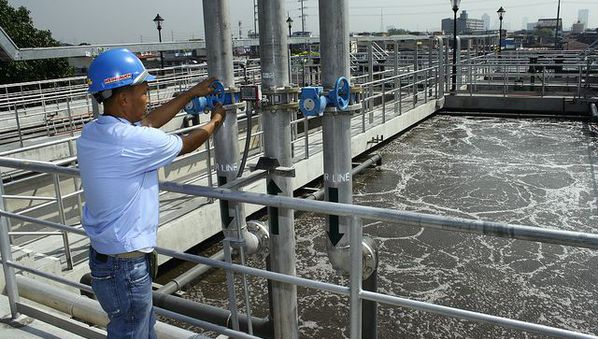
What will it take to solve Windhoek’s water stress?

By Helmke Sartorius von Bach
(First part in a series of two)
When Namibia became independent, there was no reason to migrate the capital city with its 230,000 inhabitants elsewhere as was done with Brasilia in 1960.
In 1956, the then Brazilian president Kubitschek ordered the construction of a new capital city based on the country’s constitution dating back to 1891, stating that the capital should be moved from Rio de Janeiro to a place close to the centre of Brazil.
At that time Windhoek required many post-independence reforms where necessary, such as institutional reforms in the water sector to address the challenges of the prevailing arid environment.
The 1990 consumption of water was estimated at 15 million m³ / annum and the city’s growth at 3.5%. It was calculated that the groundwater reserves plus the surface water used through the pipeline supply system was sufficient for the many residents. However, since the capital grew at a rate of 4.3%, it consequently changed the situation, i.e. Windhoek was classified as a water stress city and water supply became unsustainable to meet the development vision.
Its current water abstraction is estimated at about 40 million m³ / annum, which is expected to double within the next 30 years. An urgent call for a future plan for water supply is required such as improvements to existing sources and the development of further untapped resources.
Although significant investments were done to improve the water supply many Windhoek inhabitants are still without connections. This is not different to global circumstances where many cities have similar problems to manage their water.
Globally, more than 3.2 billion people do not have access to fresh water for at least 30 days in a year, a situation becoming more critical as urban populations expand rapidly. Over one billion people lack access to water and for another 2.7 billion it is scarce.
Since the world’s 200 to 500 largest cities depend on climatic conditions for their water, one out of four are in a situation of water stress. A recent forecast estimates that by 2050, every second person will not have access to enough drinking water.
What can we learn from global experience?
Cape Town, Tokyo, Delhi, Mexico City, Shanghai, Beijing, Los Angeles, Rio de Janeiro and Moscow are only some of the large cities that face serious water stress. Although urbanization can mitigate climate change, the rapid urbanization that many countries are experiencing places a lot of pressure on water supply, particularly in a dry year.
Water stress is set to become more pressing over the coming decades, as the projected population growth will increase the demand for water. According to the Huffington Post, it is forecast that an additional billion people are expected to move into cities in the next 30 years.
It is therefore not surprising that the cities with water stress are those which contribute significantly to their national GDP. From a global perspective, some of the bigger cities even contribute up to 5% of the global GDP. The equation is simple: “More People + More Money = More Water Demand”. Therefore, water stress is not only a result of human consumption, but also the result of industrialization.
The following table presents some of the most water stressed large cities.

Literature shows that water is often wasted. Around the world, water treatment plants, pipes, and sewer systems are in a state of disrepair. It is said that the United States for example lose 30 million m³ treated water per day from leaky pipes alone. This is close to Windhoek’s annual demand.
Inefficient practices like flood irrigation and water-intensive wet cooling at thermal power plants use more water than necessary. Some of the less well-resourced cities struggle to manage their water supply, for instance receiving their water by tanker which is five to ten times more expensive.
Furthermore, water is polluted at an alarming rate; about 80% of the world’s waste water is discharged back into nature without further treatment or reuse.
The cause of these inefficient practices is probably that safe water is seriously undervalued. The price does not reflect the actual total cost of service, from its transport via infrastructure to its treatment and disposal. This has led to misallocation of water, reduced investments in infrastructure and not enough new water technologies that use water more efficiently.
The general principle for costing water should be extended to include the full supply cost (capital charges plus operation & maintenance costs), the opportunity costs, the economic externalities, plus the environmental externalities, which could be up to three times the supply cost.
Unfortunately many cities only charge the subsidized water supply cost, which results into unsustainable use.
We also learn that although desalination is very expensive, it can be efficiently applied close to sea level. Generally, better-of cities and regions are increasingly making use of it, such as Cape Town, Singapore, Saudi Arabia, Oman, United Arab Emirates, Spain, Cyprus, Malta, Gibraltar, Cape Verde, Portugal, Greece, Italy, India, China, Japan, and Australia.
Desalination plants already operate in more than 120 countries in the world and it is estimated that they generate 20 million m³ of potable water a day. Based on global experience and the mathematics of pumping water, the pumping costs of desalinated water becomes too expensive for cities higher than 200 metre above the plant at sea level. Thus, cities with high altitudes need to find water supply solutions aside from desalinated plants.
Many water stressed cities that are located in arid areas, are classified either as economic hubs or administrative centre. However, a critical difference between most of them and Windhoek is the latter’s altitude above the sea level.
To find comparisons between Windhoek and other cities at similar altitudes, the discussion will continue next week with insights from Mexico City and Lima. These cities may provide some lessons in the quest to find a long-term solution to Windhoek’s water stress.












































